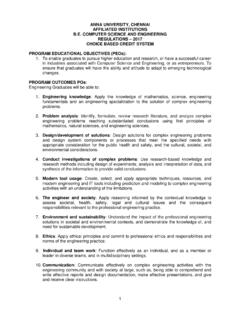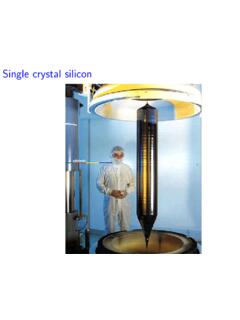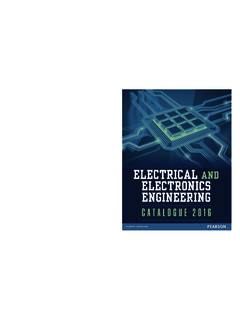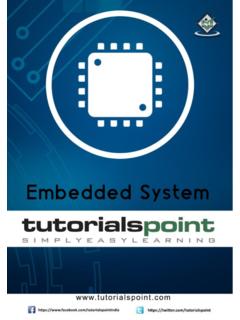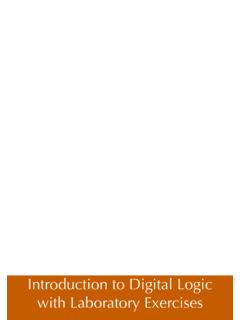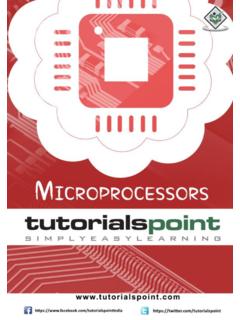Transcription of COMPUTER SCIENCE
1 COMPUTER SCIENCETexTbook for Class 108-Apr-19 10:03:55 AM2022-23 First EditionMay 2019 Vaishakha 1941 ReprintedJune 2021 Jyeshtha 1943 November 2021 Agrahayana 1943PD 30T RSP National Council of Educational Research and Training, 2019` on 80 GSM paperPublished at the Publication Division by the Secretary, National Council of Educational Research and Training, Sri Aurobindo Marg, New Delhi 110 016 and printed at Goyal Stationers, B-36/9, Karnal Road Industrial Area, Delhi 110 033 Publication TeamHead, Publication : Anup Kumar RajputDivisionChief Editor : Shveta UppalChief Production : Arun ChitkaraOfficerChief Business : Vipin DewanManagerEditor : Bijnan SutarProduction Assistant : Om PrakashALL RIGHTS RESERVED No part of this publication may be reproduced, stored in a retrieval system or transmitted, in any form or by any means, electronic, mechanical, photocopying, recording or otherwise without the prior permission of the publisher.
2 This book is sold subject to the condition that it shall not, by way of trade, be lent, re-sold, hired out or otherwise disposed of without the publisher s consent, in any form of binding or cover other than that in which it is published. The correct price of this publication is the price printed on this page, Any revised price indicated by a rubber stamp or by a sticker or by any other means is incorrect and should be OF THE PUBLICATION DIVISION, NCERTNCERT CampusSri Aurobindo MargNew Delhi 110 016 Phone : 011-26562708108, 100 Feet Road Hosdakere Halli ExtensionBanashankari III StageBengaluru 560 085 Phone : 080-26725740 Navjivan Trust Ahmedabad 380 014 Phone : 079-27541446 CWC CampusOpp.
3 Dhankal Bus StopPanihatiKolkata 700 114 Phone : 033-25530454 CWC ComplexMaligaon Guwahati 781 021 Phone : 0361-2674869 Cover and LayoutDTP CellISBN 978-93-5292-117-111120 COMPUTER SCienCeTextbook for Class 211/29/2021 12:16:32 PM2022-23 COMPUTER SCIENCE as a discipline has evolved over the years and has emerged as a driving force for socio-economic activities. It has made continuous inroads into diverse areas be it business, commerce, SCIENCE , technology, sports, health, transportation or education. With the advent of COMPUTER and communication technologies, there has been a paradigm shift in teaching learning at the school level.
4 The role and relevance of this discipline is in focus because the expectations from the school pass-outs have grown to be able to meet the challenges of the twenty-first century. Today, we are living in an interconnected world where COMPUTER -based applications influence the way we learn, communicate, commute or even socialise!There is a demand for software engineers in various fields like manufacturing, services, etc. Today, there are a large number of successful startups delivering different services through software applications.
5 All these have resulted in generating interest for this subject among students as well as parents. Development of logical thinking, reasoning and problem-solving skills are fundamental building blocks for knowledge acquisition at the higher level. COMPUTER plays a key role in problem solving with focus on logical representation or reasoning and analysis. This book focuses on the fundamental concepts and problem-solving skills while opening a window to the emerging and advanced areas of COMPUTER SCIENCE . The newly developed syllabus has dealt with the dual challenge of reducing curricular load as well as introducing this ever evolving an organisation committed to systemic reforms and continuous improvement in the quality of its products, NCERT welcomes comments and suggestions which will enable us to revise the content of the textbook.
6 HrusHikesH senapatyDirectorNew Delhi National Council of Educational8 August 2018 Research and Training Foreword 308-Apr-19 10:03:55 408-Apr-19 10:03:55 AM2022-23 Preface In the present education system of our country, specialised or discipline-based courses are introduced at the higher secondary stage. This stage is crucial as well as challenging because of the transition from general to discipline-based curriculum.
7 The syllabus at this stage needs to have sufficient rigour and depth while remaining mindful of the comprehension level of the learners. Further, the textbook should not be heavily loaded with have permeated in every facet of life. Study of basic concepts of COMPUTER SCIENCE has been desirable in education. There are courses offered in the name of COMPUTER SCIENCE , Information and Communication Technology (ICT), Information Technology (IT), etc., by various boards and schools up to secondary stage, as optional. These mainly focus on using COMPUTER for word processing, presentation tools and application SCIENCE (CS) at the higher secondary stage of school education is also offered as an optional subject.
8 At this stage, students usually opt for CS with an aim of pursuing a career in software development or related areas, after going through professional courses at higher levels. Therefore, at higher secondary stage, the curriculum of CS introduces basics of computing and sufficient conceptual background of COMPUTER primary focus is on fostering the development of computational thinking and problem-solving skills. This book has 11 chapters covering the following broader themes: Fundamentals: basic understanding of COMPUTER system, hardware components and software, data representation, number system, encoding as well as awareness of emerging trends in COMPUTER SCIENCE .
9 Problem-solving: problem analysis, algorithm, flowchart, implementation, testing and maintenance. Programming: basic constructs of a program using Python programming language program structure, identifiers, variables, flow of control, advanced data types, functions. Societal impact: awareness of digital footprints, data privacy and protection, cyber crime, etiquettes in a digital society and implications on security, privacy, piracy, ethics, values and health concerns. Chapters 1, 2, 3, 4 and 11 have two additional components (i) activities and (ii) think and reflect for self assessment while learning as well as to generate further interest in the programming language is introduced that is easy to learn in interactive and script mode.
10 A number of hands-on examples are given to gradually explain methodology to solve different types of problems across the Chapters 5 to 10. The programming examples as well as the exercises in these chapters are required to be solved in a COMPUTER and verify with the given outputs. 508-Apr-19 10:03:55 AM2022-23viGroup projects through case studies are proposed to solve complex problems. Peer assessment of these projects will promote peer-learning, team spirit and responsiveness. Some exercises have been made in case-study format to promote problem-finding and problem-solving items (light green background) are pinned inside the chapters either to explain related concepts or to provide additional information related to the topic covered in that section.











